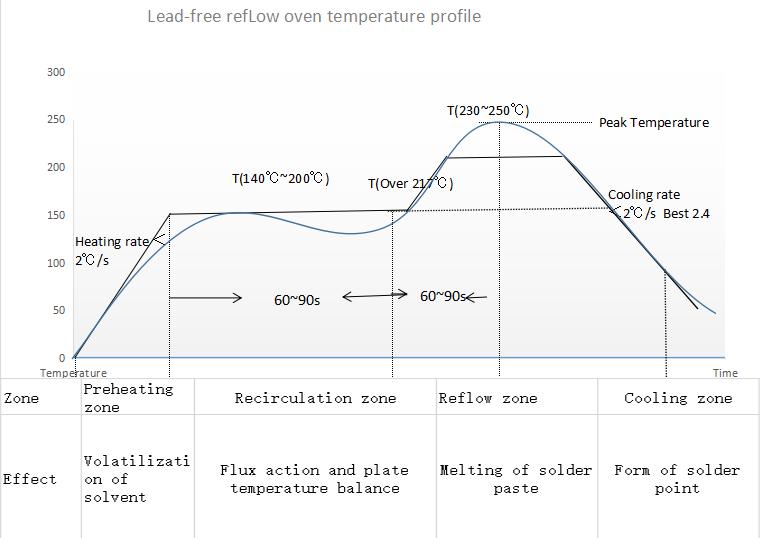

Nitrogen or Forming Gas is used to minimize or prevent assembly decomposition during steaming. The atmosphere of a reflow oven can be air, or it can be regulated to use Nitrogen or Forming Gas to prepare circuit boards it depends on the reflow oven manufacturer. The liquid alloy has adhesive qualities in this temperature range. The purpose of the reflow procedure is to heat the solder paste to its eutectic temperature, at which point the solder alloy will change phase and become liquid. Heating consistency was greatly enhanced by convection reflow furnaces, among other benefits. Convection heat transmission became the norm later on in manufacturing. Infrared thermal technology was used in the earliest days of electronics production.

For low-volume, in-lab production, a led reflow furnace can take the form of a box oven.Ī reflow oven on a conveyor belt or continuous setup is ideal for factories with high throughput. In a reflow furnace, solder undergoes thermal processing for use in electronics production. What Does A Reflow Oven Manufacturer Build?Īs you already know a reflow oven manufacturer makes a device called a reflow oven that is used in the reflow soldering process.

In this article, we’ll know about the reflow oven and the contribution of a reflow oven manufacturer in the process. Hence, proper knowledge about the devices is required to deal with the process. Reflow soldering is a complex process where many technologies are used. Since reflow ovens are an integral part of the process, a reflow oven manufacturer produces and distributes these devices. The same for the capacitor and the inductor as well.Reflow soldering is a method of soldering in which an infrared lamp is used to heat the air and melt the solder, and the process is carried out in a tunnel or reflow oven, where the temperature is kept constant to avoid thermal damage and improve the connections. On the other side, these voltage regulators also have good solder connections. Even the 0402 resistors got soldered perfectly.

#REFLOW SOLDERING AT HOME PROFESSIONAL#
The components look like they were soldered by professional machines. Below you have a fast replay of the components getting soldered, is actually quite amazing how professional it looks. The temperature raised a bit too hard but I got good results. You can also see a red light turning on the relay very dim because we start with low PWM values.
#REFLOW SOLDERING AT HOME CODE#
We can hear a beep and now the code is running. I power on the hot plate and place the PCB on top. I didn't fill the entire PCB but I've placed a few resistors, capacitors, transistors and some regulators. Finally, I end up with the exact amount of paste for each pad so now I can add the components one by one. I add solder paste and using a spatula I fill all the holes evenly. Then I get my SMD stencil and fit it exactly on top. I first secure my test PCB in place with some other PCBs. The rest of the components could be some wood for support, maybe screws and nuts, maybe some glue and so on. To supply the Arduino, we need 5V and I’ll get that with a cheap and simple switch mode power supply, in this way both the heater and the low voltage parts could be supplied with 240V from the main outlet. Have thick wires as well for the power connections. Finally, together with the Arduino we need a screen to show the temperature, power and setpoint values and some extra components such as some push buttons, maybe a buzzer and an LED or even a rotary encoder for adjusting the values. We could add a heat dissipator on top just to make sure I won’t burn them put or have any other problems. That’s why I bought some high-power relays, one is of 25 ampers. 3000W divided by 240V is around 13 amps of current. These components already have the TRIAC and the firing circuit inside, we can easily control this with a 5V pulse from the Arduino. To control power we can use the solid-state relays or so called SSRs.


 0 kommentar(er)
0 kommentar(er)
